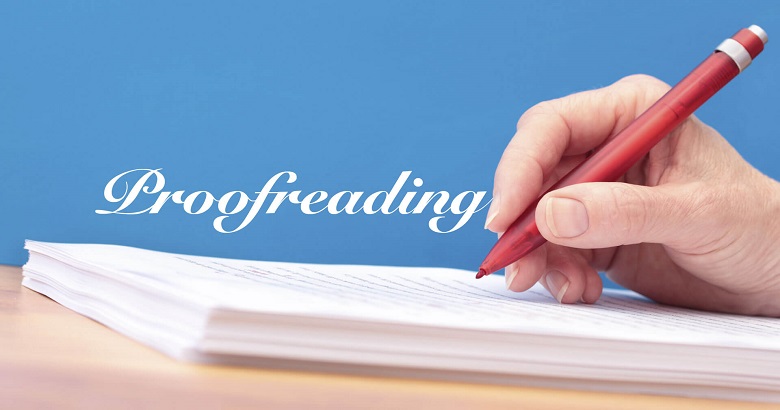Content is everywhere in today’s world, and you might wonder: Are proofreaders still needed? With tools like spell checkers and AI writing assistants, it seems like proofreading could be left to technology. But the truth is, human proofreaders are still incredibly important. They do much more than just fix typos. They make sure the content is clear, professional, and engaging. Let’s explore ten key reasons why proofreaders are still needed today.
1. AI and Spell Checkers Make Mistakes
Have you ever typed a word, and your phone autocorrected it to something completely wrong? That happens with AI tools, too! They can catch basic grammar mistakes, but they often miss things like context and tone. A proofreader can understand what the writer meant to say and make sure it sounds natural.
For example, AI might not catch the difference between “their,” “there,” and “they’re” in a sentence. A human proofreader, on the other hand, ensures the right word is used every time.
2. Keeping a Consistent Brand Voice
Every brand has a unique way of speaking. Some are fun and playful, while others are serious and professional. Automated tools can correct grammar, but they don’t understand personality. A proofreader makes sure all content sounds like it comes from the same voice, helping businesses stay consistent.
Imagine reading a fun and casual blog post from a company one day and a super formal one the next. It would feel confusing! Proofreaders prevent this by making sure every piece of writing matches the brand’s personality.
3. Catching Small But Important Mistakes
Some typos are harmless, but others can change the meaning of a sentence completely. Proofreaders have a sharp eye for detail and can catch mistakes that automated tools might miss.
For example, look at these two sentences:
- “Let’s eat, Grandma!”
- “Let’s eat Grandma!”
The missing comma in the second sentence makes a huge difference! Proofreaders make sure these little mistakes don’t slip through.
4. Making Content Easy to Read
Have you ever read something so confusing that you had to reread it multiple times? That’s what happens when writing isn’t clear. Proofreaders help by breaking up long sentences, simplifying complex words, and making content flow smoothly.
For example, instead of: “The implementation of new policies has resulted in an enhancement of workplace efficiency.”
A proofreader might suggest: “The new policies have made the workplace more efficient.”
Much easier to read, right?
5. Ensuring Proper Formatting
Proofreading isn’t just about fixing words; it’s also about making sure the content looks neat and professional. Proofreaders check formatting, spacing, bullet points, and headings to ensure everything is organized and easy to follow.
For instance, in a resume, messy formatting can make a candidate look unprofessional. Proofreaders make sure everything is clean and polished, improving first impressions.
6. Preventing Legal and Ethical Issues
Some industries, like law, healthcare, and finance, require precise wording. A small mistake in a contract or report could lead to serious problems. Proofreaders carefully review documents to ensure accuracy and avoid misunderstandings.
For example, in a financial report, the difference between “profits increased by 10%” and “profits increased to 10%” could completely change the meaning. Proofreaders help avoid such costly mistakes.
7. Helping Non-Native English Writers
Many businesses work with people who speak English as a second language. Even if they write well, their content might have small errors that make it sound unnatural. Proofreaders refine their writing, making it smooth and professional.
For example, a non-native speaker might write: “She has a good knowledge of marketing.”
A proofreader would correct it to: “She has good knowledge of marketing.”
These small fixes make a big difference!
8. Boosting SEO and Online Performance
Search engines like Google favor well-written content. If a website has too many grammar mistakes, it can hurt its rankings and make readers leave. Proofreaders ensure content is clear, engaging, and optimized for search engines.
They also make sure keywords fit naturally into the text. Instead of awkwardly stuffing in keywords like “best travel tips travel blog,” a proofreader would adjust it to “The best travel tips for your next adventure.”
9. Strengthen Professional and Academic Credibility
Mistakes in business reports, emails, or academic papers can make a company or author look unprofessional. Proofreaders help ensure high-quality writing that builds trust and credibility.
Imagine reading a job application full of typos. Would you hire that person? Probably not! The same goes for businesses and academic work—flawless writing leaves a strong impression.
10. Standing Out in a Crowded Market
With so much content online, businesses need to stand out. High-quality writing helps create a strong brand and attract more readers. Proofreaders add that extra layer of polish, making content shine.
For example, if two businesses sell the same product, but one has well-written, error-free content while the other has typos and poor grammar, which one would you trust more? Quality writing gives businesses a competitive edge.
Wrapping Up
Even with advanced AI tools, proofreaders are still essential. They bring a human touch, ensuring content is clear, engaging, and error-free. Whether it’s for businesses, students, or online creators, proofreaders help content reach its full potential.
So, the next time you write something important, consider having a proofreader check it over. Your readers (and your reputation) will thank you!
Frequently Asked Questions
1. Why do we still need proofreaders if AI tools exist?
While AI-powered tools like Grammarly and spell checkers can catch basic errors, they lack human intuition and context awareness. AI struggles with homophones (e.g., “there” vs. “there”), tone, and complex sentence structures. Proofreaders not only correct mistakes but also refine language for clarity, professionalism, and engagement. Unlike AI, proofreaders can understand the nuances of a message and ensure it resonates with the intended audience.
2. How does proofreading improve SEO and digital content performance?
Search engines prioritize content that is clear, readable, and free from grammatical errors. Poorly written content with typos and awkward phrasing can reduce engagement and increase bounce rates, negatively affecting SEO rankings. Proofreaders ensure smooth readability, logical flow, and proper keyword integration—helping content rank higher while keeping readers engaged.
3. Can proofreaders help non-native English speakers improve their writing?
Absolutely! Non-native English writers may struggle with idiomatic expressions, verb tenses, and prepositions. Proofreaders help refine their writing to make it more natural and fluent. They ensure correct word usage and sentence structure while maintaining the original meaning. This makes the content more accessible and professional, whether for business communication, academic writing, or online content.
4. What’s the difference between editing and proofreading?
Editing focuses on improving content structure, clarity, and tone, often involving rewriting sections for better flow. It addresses major issues like redundancy, coherence, and logical progression. Proofreading, on the other hand, is the final step before publishing—it ensures grammar, spelling, punctuation, and formatting are flawless. While editing enhances the overall message, proofreading polishes it to perfection.
5. How do proofreaders maintain a brand’s voice and consistency?
Every brand has a specific tone, whether formal, friendly, or technical. Automated tools cannot consistently maintain this unique style across multiple pieces of content. Proofreaders ensure that all written materials align with a brand’s identity, preventing inconsistencies in language, tone, and messaging. This consistency builds trust and strengthens brand recognition, making content more impactful and professional.



